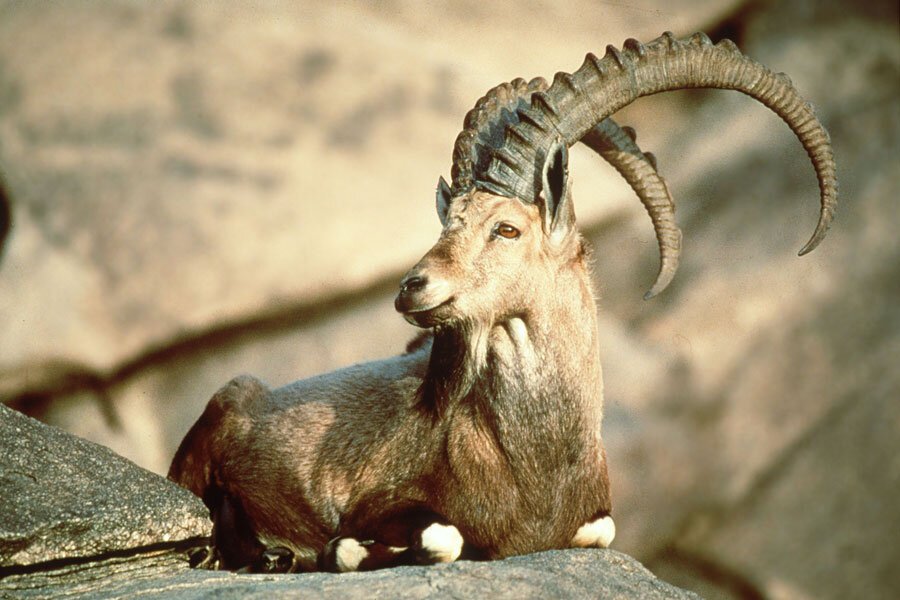The Pyrenean Ibex: A Requiem for the Lost Mountain Ghost
Introduction:
The Pyrenean Ibex, scientifically known as Capra pyrenaica pyrenaica, was a subspecies of the Spanish Ibex that roamed the Pyrenees Mountains between France and Spain. This species, often referred to as the Bucardo, became extinct in the year 2000, marking a significant loss for biodiversity. The extinction of the Pyrenean Ibex is particularly notable not only for its impact on the ecological balance of its mountain habitats but also because it was the subject of the first attempt to resurrect a species through cloning, which ultimately ended in failure but opened discussions on the possibilities and ethics of de-extinction.
Facts:
| Attribute | Details |
|---|---|
| Scientific Name | Capra pyrenaica pyrenaica |
| Common Names | Pyrenean Ibex, Bucardo |
| Year Declared Extinct | 2000 |
| Kingdom | Animalia |
| Phylum | Chordata |
| Class | Mammalia |
| Order | Artiodactyla |
| Family | Bovidae |
| Genus | Capra |
| Species | C. pyrenaica |
| Natural History and Origin | Native to the Pyrenees Mountains between France and Spain |
| Physical Information | Medium-sized, robust body, large, backward-curving horns |
| Appearance | Greyish brown fur, darker on the underside, males larger and with more prominent horns |
| Scientist Names | Initially described by naturalists in the early 19th century |
| Region | Pyrenees Mountains, France and Spain |
Appearance:
The Pyrenean Ibex was distinguished by its robust build and impressive backward-curving horns, which could reach up to 75 cm in males. Its coat was thick and woolly, adapting it to the cold temperatures of its mountainous habitat. The fur was typically greyish-brown, darker on the winter coat and lighter during summer, with a darker line running along the back.
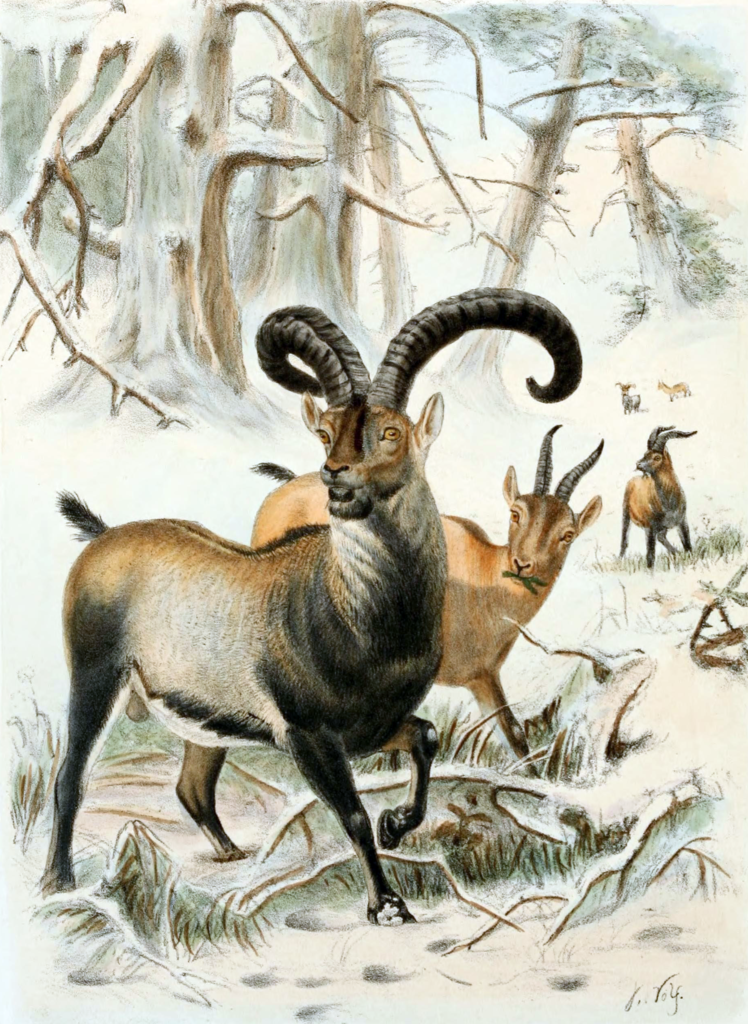
Distribution:
The Pyrenean Ibex was once widespread across the Pyrenees Mountains, a range that forms a natural border between France and Spain. Over centuries, their numbers declined due to unregulated hunting and habitat loss, restricting them to the northern slopes of these mountains by the late 20th century.
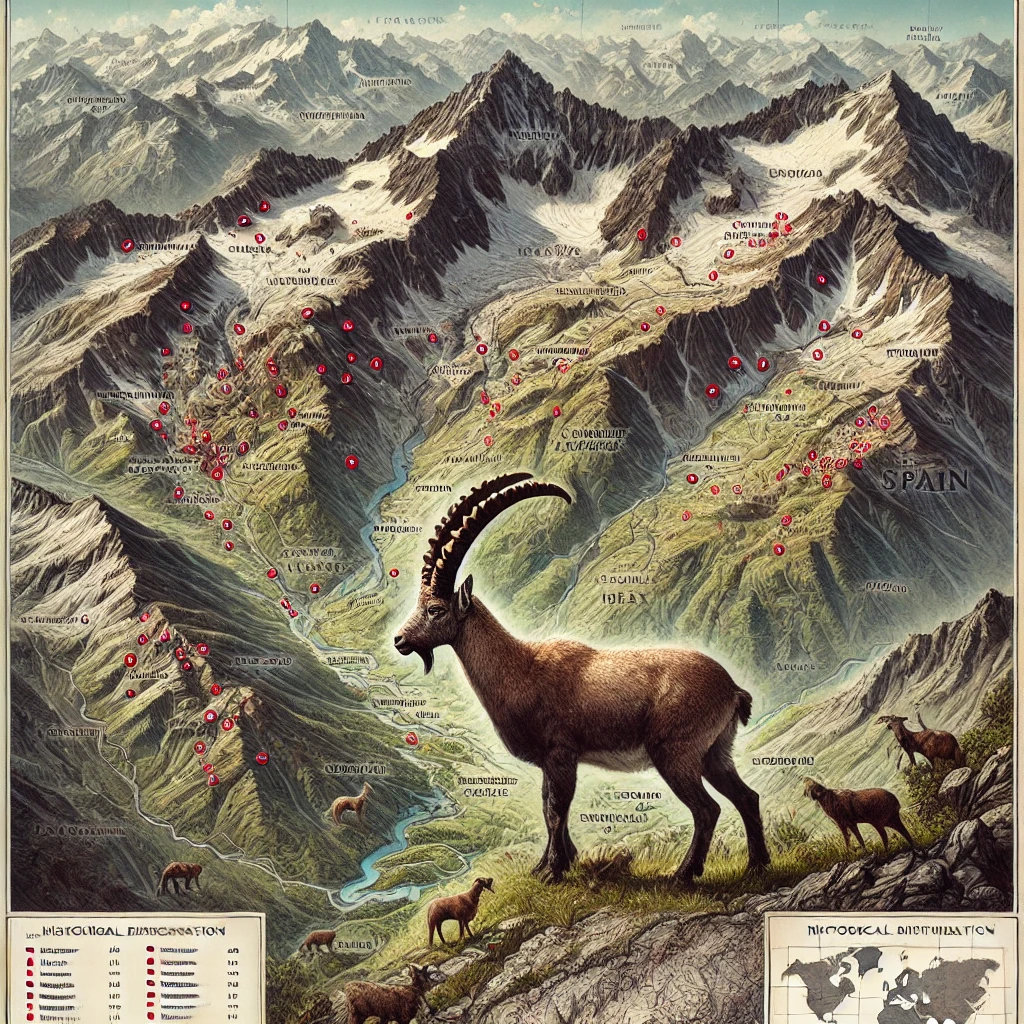
Habits and Lifestyle:
Primarily diurnal, the Pyrenean Ibex was most active during the early morning and late afternoon. They were skilled climbers, adapted to navigate the rocky slopes and cliffs of the Pyrenees. Their social structure was characterized by sexually segregated groups for most of the year, with males and females coming together only during the mating season.
Physical Characteristics:
The Pyrenean Ibex was a medium-sized goat with a strong and compact body, ideal for its rugged mountainous environment. Males were significantly larger than females and possessed larger horns. Their hooves were tough and provided excellent grip on the steep, rocky terrain.
Diet and Nutrition:
Their diet consisted predominantly of grasses, herbs, and leaves, supplemented by mosses and lichens during winter. The Pyrenean Ibex had to travel considerable distances to find food, often moving to lower altitudes in winter to escape the harsh conditions in the higher regions.
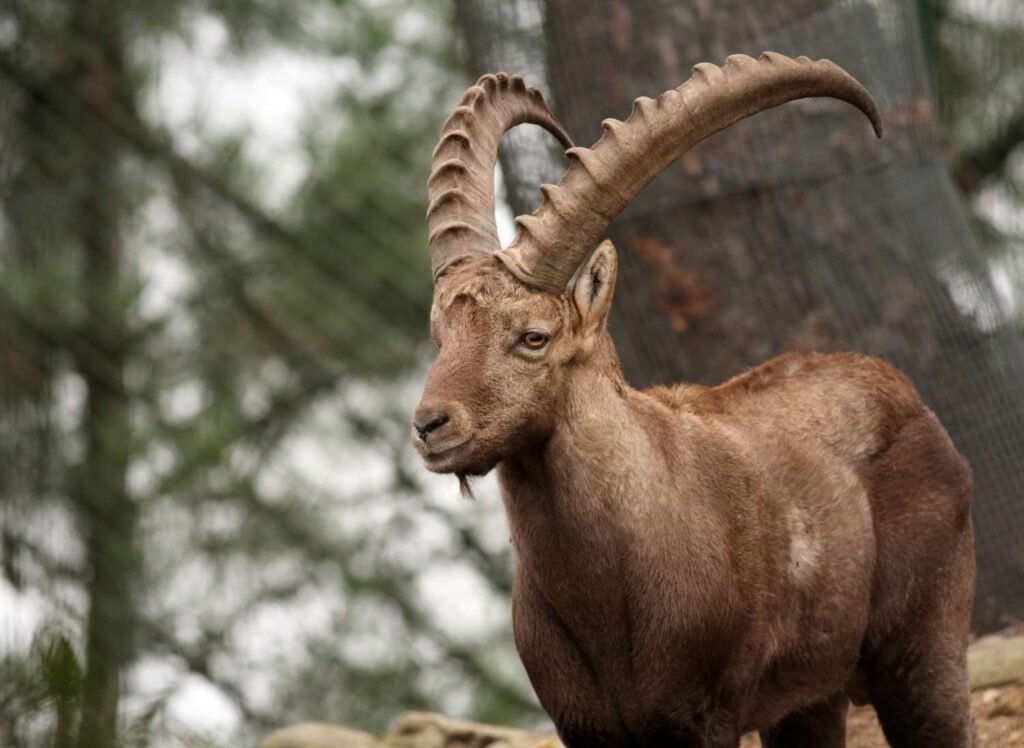
Behavior:
The species exhibited typical caprine behaviors, including head-butting among males during the rutting season. Females were more social, often forming herds with other females and their young. This social structure helped them protect against predators such as wolves and bears, common in their habitat.
Cause of Extinction:
The extinction of the Pyrenean Ibex was primarily driven by excessive hunting and the fragmentation of their habitat. Despite protective measures implemented in the late 20th century, their numbers continued to decline due to a lack of genetic diversity and disease, leading to their eventual extinction.
FAQs:
| Question | Answer |
|---|---|
| What led to the extinction of the Pyrenean Ibex? | Overhunting, habitat fragmentation, and diseases. |
| When was the last Pyrenean Ibex seen? | The last known individual, a female named Celia, was found dead in 2000. |
| What were the cloning attempts about? | Scientists attempted to clone the Pyrenean Ibex as a means to bring |
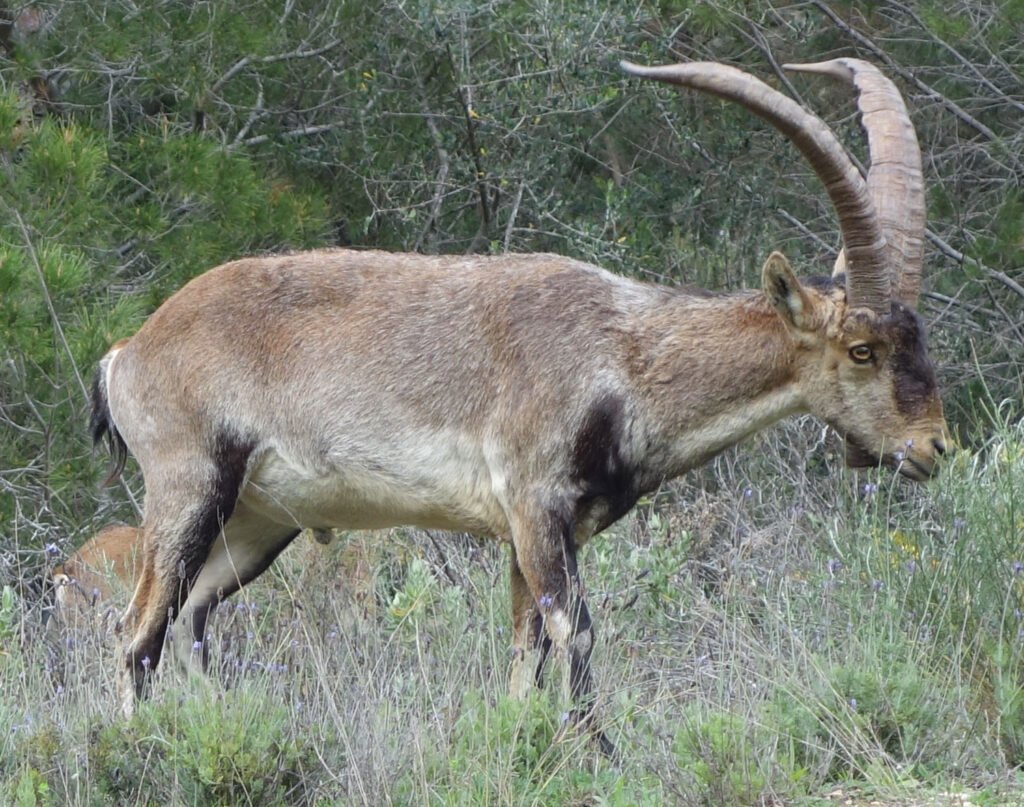
Pyrenean Ibex, Capra pyrenaica pyrenaica, Bucardo, extinct species, Spanish Ibex, Pyrenees mountains, wildlife conservation, de-extinction, cloning extinct species, mountain ecosystems, biodiversity in Pyrenees, habitat fragmentation, endangered mountain wildlife, conservation efforts in Europe, ecological impact of extinction, overhunting impacts, genetic diversity issues, wildlife protection laws, European natural heritage, animal reintroduction efforts.
Categories:
- Extinct Animals
- Mountain Ecosystems
- Wildlife Conservation
- Genetic Research
Views: 21
